Tunisia
Welcome to Tunisia
Tunisia’s geography is as varied as its history. The north boasts lush hills and a sparkling coastline, while the south stretches into the golden sands of the Sahara. Its cities and towns are a living museum, home to Roman amphitheaters, Islamic architecture, and French colonial boulevards. The capital, Tunis, is a microcosm of the country’s contrasts: ancient medinas, world-class museums, and lively cafés. Beyond the cities, you’ll find blue-and-white seaside villages, sprawling olive groves, and oases that seem to spring from nowhere in the desert. The country’s cultural heritage is a mosaic of influences from Berber, Phoenician, Roman, Arab, Ottoman, and French civilizations. This diversity is reflected in its food, music, art, and daily life. Tunisia’s people are known for their warmth and generosity, welcoming visitors with open arms and a genuine curiosity about the world.
1.
A Land of Ancient Wonders and Modern Marvels
Tunisia is a treasure trove for history lovers. Walk in the footsteps of Carthaginian warriors and Roman emperors at the ruins of Carthage and the awe-inspiring El Djem Amphitheater. Wander through the medinas of Tunis, Sousse, and Kairouan, where centuries-old mosques and bustling souks transport you back in time. Every corner of Tunisia tells a story, from the mosaics of ancient Dougga to the star-studded sky above a desert camp.
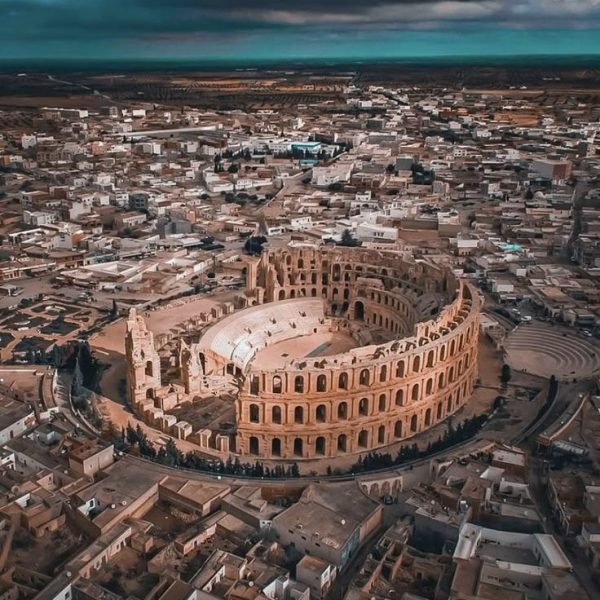
2.
A Feast for the Senses
Tunisia offers more than just sights—it’s an immersive experience. Savor the flavors of brik, couscous, and spicy harissa. Hear the call to prayer echo through narrow streets, and the laughter of children playing by the sea. Feel the cool Mediterranean breeze in Sidi Bou Said, or the warm sand beneath your feet in the Sahara. Whether you’re seeking adventure, relaxation, or cultural immersion, Tunisia delivers it all with authenticity and flair.
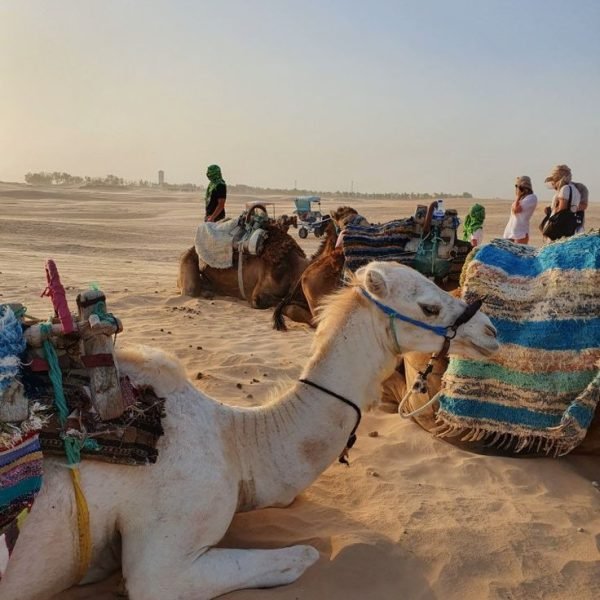
Planning Your Trip
Visa Information
Tunisia is relatively accessible for travelers from many countries. Citizens of the European Union, the United States, Canada, and several other nations can enter Tunisia visa-free for stays of up to 90 days. However, it’s essential to check the latest requirements, as regulations may change. For longer stays or for travelers from countries not on the visa-exempt list, a visa must be obtained in advance from a Tunisian embassy or consulate. Always ensure your passport is valid for at least six months beyond your planned departure date.
Best Time to Visit
Tunisia enjoys a Mediterranean climate along the coast and a desert climate in the south. The best times to visit are spring (March to May) and autumn (September to November), when the weather is pleasantly warm and ideal for sightseeing, beach trips, and desert excursions. Summers (June to August) can be hot, especially inland and in the Sahara, but coastal areas remain inviting for sunbathers and swimmers. Winters (December to February) are mild along the coast but can be chilly and rainy, making it a quieter time for those seeking fewer crowds.
Getting To and Around
Getting to Tunisia
Most international travelers arrive via Tunis-Carthage International Airport, located just outside the capital. The airport is well-connected to major European cities and some Middle Eastern hubs. Other airports, such as those in Monastir, Sfax, and Djerba, also receive international flights, particularly from Europe.
Ferries from Italy and France are another option, especially for those traveling with a vehicle or seeking a scenic arrival by sea. The main ferry ports are Tunis (La Goulette) and Sfax.
Getting Around Tunisia
Tunisia’s compact size makes it easy to explore. The country has a well-developed network of trains, buses, and shared taxis known as “louages.” Trains connect major cities like Tunis, Sousse, Sfax, and Gabès, offering a comfortable and affordable way to travel. Long-distance buses and louages cover routes to smaller towns and rural areas.
Car rentals are widely available and offer the flexibility to explore at your own pace, especially if you plan to visit remote desert regions or coastal villages. Roads are generally in good condition, but driving in cities can be hectic. For short distances within cities, taxis are plentiful and inexpensive.
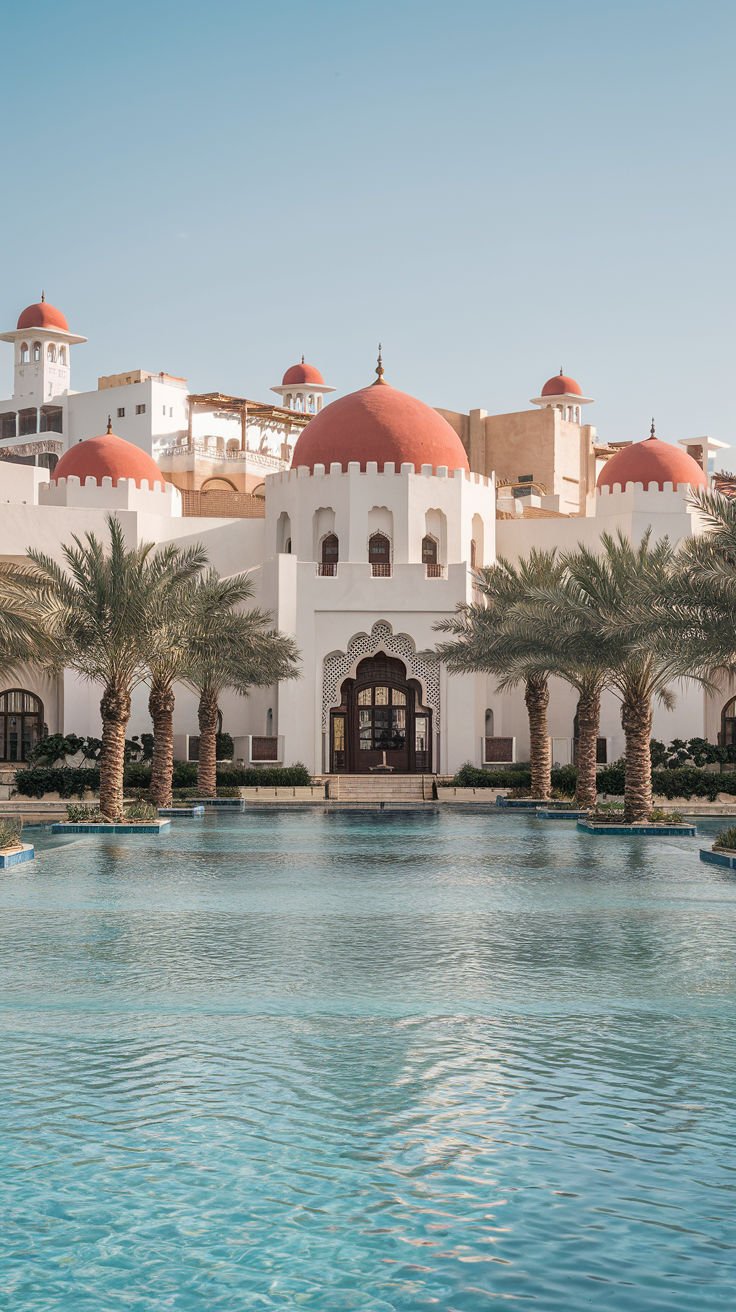
Accommodation
Tunisia, with its blend of Mediterranean charm and North African warmth, offers a wide spectrum of accommodation options to suit every traveler’s taste and budget. Whether you’re seeking the luxury of a five-star resort, the authenticity of a traditional guesthouse, or the independence of a self-catering apartment, Tunisia’s hospitality scene is as diverse as its landscapes.
Accommodation in Tunisia
Hotels and Resorts
Tunisia’s hotels range from internationally renowned five-star resorts to boutique properties and budget-friendly lodgings. In popular coastal destinations like Hammamet, Sousse, and Djerba, you’ll find sprawling beachfront resorts with all-inclusive packages. These resorts typically feature multiple swimming pools, direct beach access, spa facilities, kids’ clubs, and a variety of dining options. Many offer nightly entertainment, sports activities, and organized excursions, making them ideal for families and those seeking a hassle-free holiday.
For example, properties such as JAZ Tour Khalef in Sousse are praised for their spotless rooms, stunning sea views, and a wide selection of delicious food. Guests can expect friendly staff, well-stocked bars, and a lively atmosphere with entertainment for all ages. Similarly, La Badira in Hammamet is celebrated for its elegant design, excellent service, and a perfect blend of international and Tunisian cuisine. Many of these resorts also boast world-class spas, private beaches, and serene pools, offering a truly relaxing escape.
In cities like Tunis and Sfax, business travelers and urban explorers will find a range of hotels from luxury chains to comfortable mid-range options. These are often centrally located, providing easy access to historical sites, markets, and restaurants.
Guesthouses and Boutique Stays
For a more intimate and authentic experience, Tunisia’s guesthouses—often called “dars” or “riads”—are a fantastic choice. These properties are typically set in restored traditional homes, featuring courtyards, intricate tilework, and personalized service. In historic cities such as Kairouan, you’ll find charming guesthouses that immerse you in local culture, offering home-cooked breakfasts and proximity to landmarks like the Great Mosque. Many of these boutique stays blend modern comforts with traditional décor, providing a peaceful retreat after a day of sightseeing.
Vacation Rentals and Apartments
Travelers seeking flexibility and independence can opt for vacation rentals, which are increasingly popular in Tunisia’s cities and coastal towns. Apartments and villas are available for short or extended stays, often featuring fully equipped kitchens, air conditioning, Wi-Fi, and sometimes even private pools or gardens. This option is ideal for families, groups, or anyone wanting to experience Tunisia like a local. Properties range from modern city apartments in Tunis and Sousse to beachfront villas in Djerba and Mahdia.
Budget Accommodation
Backpackers and budget-conscious travelers are well-catered for with hostels, budget hotels, and simple guesthouses. These accommodations provide basic amenities—clean rooms, shared or private bathrooms, and sometimes breakfast—at very affordable rates. Many are conveniently located near transport hubs or within walking distance of major attractions.
Unique Stays
For something truly memorable, consider spending a night in a traditional desert camp near Douz or Tozeur. These camps offer the chance to sleep under the stars, enjoy Berber music and cuisine, and experience the magic of the Sahara. Some camps provide comfortable tents with beds and en-suite bathrooms, blending adventure with comfort.
Booking and Practical Tips
Tunisia’s accommodation is generally good value, with options to suit all budgets. It’s advisable to book in advance during peak seasons—spring, autumn, and major holidays—especially in popular resorts and cities. Most hotels and guesthouses accept credit cards, though it’s wise to carry some cash for smaller establishments or rural areas.
All hotels in Tunisia are required to charge a tourist tax, payable at check-in. The amount varies depending on the hotel’s category and the length of your stay.

Food and Drink
Tunisian cuisine is a vibrant fusion of Mediterranean freshness, North African spices, and centuries-old culinary traditions. Eating in Tunisia is not just about sustenance—it’s an experience that engages all the senses, from the aroma of freshly baked bread to the colorful displays of spices in local markets.
Traditional Dishes
Couscous is Tunisia’s national dish and a staple at family gatherings and special occasions. It’s typically steamed and served with lamb, chicken, or fish, accompanied by a medley of vegetables and a savory, often spicy, broth. Each region adds its own twist, making couscous a dish worth sampling in different parts of the country.
Brik is another must-try—a crispy, deep-fried pastry filled with egg, tuna, capers, and parsley. Served piping hot, it’s a popular street food and a favorite starter at restaurants.
Harissa, a fiery chili paste made with red peppers, garlic, and spices, is a cornerstone of Tunisian cuisine. It’s served alongside bread, mixed into stews, or used as a condiment to add depth and heat to any dish.
Other popular dishes include:
- Lablabi: A hearty chickpea soup flavored with cumin, garlic, and olive oil, often topped with a poached egg and pieces of crusty bread.
- Ojja: A spicy tomato and pepper stew with eggs, sometimes enriched with merguez sausage.
- Mechouia salad: A smoky grilled vegetable salad with tomatoes, peppers, onions, and sometimes tuna and hard-boiled eggs.
- Seafood: Given Tunisia’s long coastline, fresh fish and seafood are abundant. Grilled dorade, calamari, and shrimp are menu staples in coastal towns.
Dining Experiences
Tunisia’s dining scene ranges from upscale restaurants in city centers and resorts to humble cafés and lively street food stalls. In tourist hotspots like Sidi Bou Said and La Marsa, you’ll find elegant eateries offering both local and international cuisine, often with stunning sea views.
In the medinas, small family-run restaurants serve home-style meals in atmospheric settings. Don’t miss the chance to enjoy a traditional Tunisian breakfast of fresh bread, olive oil, honey, and strong coffee.
Street food is an integral part of daily life. Vendors sell everything from brik and grilled meats to sweet pastries and fresh fruit juices. Sampling street food is a delicious and affordable way to experience local flavors.
Drinks
Mint tea, often served with pine nuts, is the drink of hospitality in Tunisia. Coffee culture is strong, with espresso and Turkish-style coffee widely available in cafés. Freshly squeezed orange juice is a refreshing treat, especially in the warmer months.
While Tunisia is a Muslim-majority country, alcohol is available in many hotels, restaurants, and licensed shops. Local wines and beers are produced and enjoyed, particularly in tourist areas. Popular local drinks include Celtia beer and Magon wine.
Dietary Considerations
Vegetarians will find plenty of options, especially vegetable-based salads, stews, and couscous. However, many dishes feature meat or seafood, so it’s helpful to ask about ingredients if you have dietary restrictions. Bread is served with nearly every meal, and olives are a common accompaniment.
Food Safety and Etiquette
Food in Tunisia is generally safe, especially in reputable restaurants and hotels. When eating street food, choose stalls with high turnover and freshly prepared items. Tap water is not always potable, so opt for bottled water, especially outside major cities.
Tunisians take pride in their hospitality. It’s customary to greet your host and fellow diners before starting a meal. Sharing food is common, and meals are often leisurely affairs meant to be savored.
Tunisia’s accommodation and culinary offerings reflect the country’s rich heritage and welcoming spirit. Whether you’re relaxing in a luxury resort, exploring a bustling medina, or savoring a plate of couscous by the sea, you’ll find that Tunisia’s hospitality and flavors make every journey memorable.

Must-See Attractions
- The El Jem Amphitheatre
One of the world’s best-preserved Roman amphitheaters, El Jem is a spectacular monument that transports visitors back to the grandeur of the Roman Empire. This UNESCO World Heritage site is larger than Rome’s Colosseum and offers immersive exploration, including underground chambers where gladiators once prepared for combat. Its massive stone structure and photogenic vistas make it a favorite for history buffs and families alike. - The Sahara Desert and Oases
Tunisia’s Sahara Desert is a breathtaking natural wonder. Vast golden dunes stretch as far as the eye can see, punctuated by lush oases like Tozeur and Douz. These oases are perfect for experiencing traditional desert life, with palm groves, natural springs, and charming mud-brick architecture. The desert’s magic is amplified at sunset, when the sky turns fiery orange, and at night, when stars blanket the sky in an unforgettable celestial display. - Carthage
The ancient ruins of Carthage, once a powerful Phoenician city and Rome’s rival, are a must-visit for archaeology enthusiasts. The site includes the Baths of Antoninus, Roman villas, Punic ports, and the Carthage National Museum, which houses an impressive collection of artifacts. Carthage’s coastal location offers stunning views of the Mediterranean, blending history with natural beauty. - The Medina of Tunis
The old city of Tunis is a UNESCO World Heritage site, renowned for its labyrinthine alleys, traditional souks, and centuries-old mosques. The Medina is a vibrant cultural hub where you can shop for handcrafted ceramics, carpets, and spices, or simply soak in the atmosphere of bustling markets and historic architecture. Don’t miss the Ez-Zitouna Mosque and the vibrant street life that brings this area to life. - Sidi Bou Said
Known as the “Blue and White Village,” Sidi Bou Said is a picturesque coastal town famous for its cobalt blue doors, window frames, and wrought-iron balconies set against whitewashed buildings. This charming village offers stunning views of the Mediterranean Sea, quaint cafés, art galleries, and a peaceful atmosphere perfect for leisurely strolls and photography. - Hammamet Beach
For sun, sea, and sand, Hammamet Beach is a top destination. Its long stretch of sandy shore is lined with shops, restaurants, and water sports facilities. The calm, warm waters of the Mediterranean make it ideal for swimming, paddleboarding, and relaxing under the sun. The town itself combines a lively nightlife with historic sites like the old Medina and fortifications. - The National Bardo Museum
Located in Tunis, the Bardo Museum is home to one of the world’s largest collections of Roman mosaics, Punic jewelry, and Islamic artifacts. The museum’s colorful interiors and beautifully curated exhibits provide deep insight into Tunisia’s rich cultural and historical heritage. - Dougga
For those interested in ancient ruins off the beaten path, Dougga is a remarkably well-preserved Roman city set in the countryside. Its temples, theaters, and baths offer a glimpse into life during Roman times, surrounded by stunning natural landscapes.
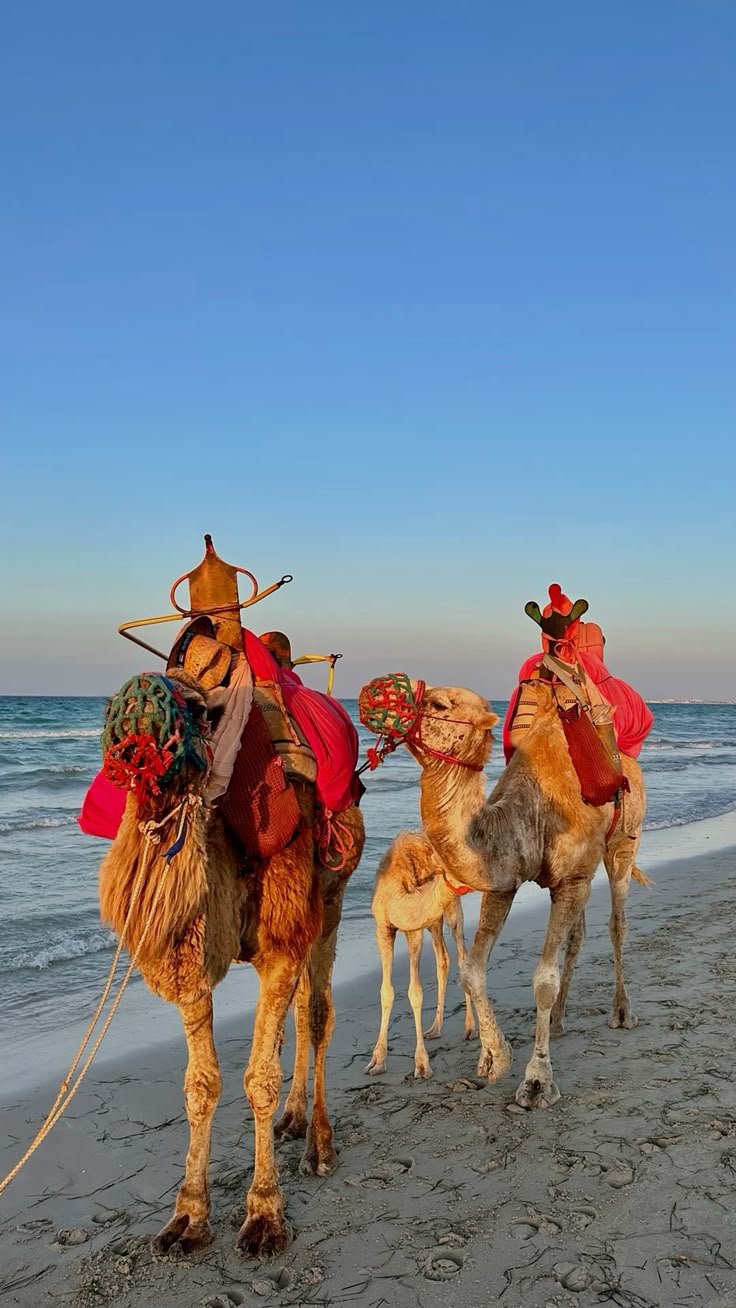
Must-Do Activities
- Camel Trekking and Desert Safari
No visit to Tunisia is complete without venturing into the Sahara Desert. Camel treks across the dunes offer a timeless way to experience the desert’s vastness and tranquility. For a more adrenaline-filled adventure, jeep safaris provide thrilling rides over sand dunes and through desert landscapes. Many tours include overnight stays in desert camps, where you can enjoy traditional Berber music, local cuisine, and stargazing under the clear desert sky. - Explore the Medina Markets
Wandering through the souks of Tunis, Sousse, or Kairouan is a sensory delight. These markets brim with vibrant colors, fragrant spices, handcrafted goods, and lively haggling. It’s the perfect place to pick up souvenirs like ceramics, carpets, leather goods, and traditional jewelry. Take your time to explore narrow alleys and discover hidden cafés and artisan workshops. - Visit Star Wars Filming Locations
Tunisia’s desert landscapes served as iconic backdrops for the Star Wars saga, particularly the planet Tatooine. Fans can visit locations near Matmata and Tataouine, including troglodyte dwellings and desert vistas that appear in the films. Guided tours offer fascinating insights into the movie-making process and the region’s unique geology and culture. - Relax on Mediterranean Beaches
Besides Hammamet, Tunisia boasts many beautiful beaches along its Mediterranean coast. Djerba Island offers tranquil, sandy shores with crystal-clear waters, ideal for swimming and water sports. The beaches around Sousse and Monastir are also popular for their lively atmosphere and excellent facilities. - Discover Traditional Tunisian Cuisine
Engage your taste buds by sampling Tunisia’s rich culinary heritage. Join a cooking class to learn how to prepare dishes like couscous, brik, and harissa-spiced stews. Alternatively, enjoy a food tour through the medinas, tasting local specialties at street stalls and family-run restaurants. - Explore Ancient Roman Ruins
Beyond El Jem and Carthage, Tunisia is dotted with fascinating Roman sites. The ruins at Dougga and Thuburbo Majus offer extensive remains of temples, theaters, and baths in serene settings. These sites provide a deeper understanding of Tunisia’s Roman past and are less crowded than the more famous attractions. - Visit the Oasis Towns
Tozeur and Nefta are gateways to the desert and offer unique experiences with their palm groves, traditional architecture, and vibrant markets. Explore the old town, visit the Dar Cherait Museum in Tozeur, or take a boat ride on the salt lake Chott El Jerid nearby. - Attend Cultural Festivals
Tunisia hosts several festivals throughout the year that showcase its music, dance, and traditions. The International Festival of Carthage features classical music and theater performances in the ancient amphitheater. The Sahara Festival in Douz celebrates desert culture with camel races, poetry, and traditional crafts. - Explore Sidi Bou Said’s Art Scene
Spend time in Sidi Bou Said visiting art galleries and artisan shops. The village has inspired many artists and writers, and its bohemian atmosphere is perfect for leisurely exploration. Don’t miss the Ennejma Ezzahra palace, a cultural center with exhibitions and concerts. - Visit the Crocodile Farm in Hammamet
For a family-friendly outing, the Crocodile Farm near Hammamet offers a chance to see these fascinating reptiles up close. The farm also features other animals and provides educational experiences about wildlife conservation.
Tunisia in 2025 offers a rich palette of experiences, from exploring ancient civilizations to immersing yourself in desert adventures and coastal relaxation. Whether you’re marveling at Roman amphitheaters, wandering vibrant souks, or watching the sun set over the Sahara dunes, Tunisia promises a journey filled with discovery, culture, and unforgettable memories.
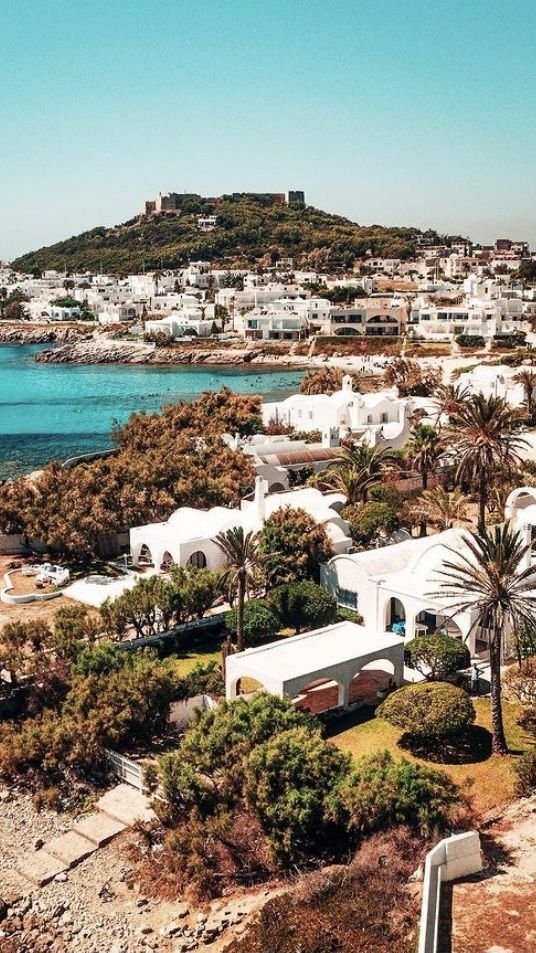
Travel Tips
Traveling to Tunisia in 2025 promises a vibrant mix of ancient history, Mediterranean charm, and North African warmth. To make your journey smooth and enjoyable, it’s essential to be well-prepared with practical safety tips, an understanding of local customs, and a few language basics. Here’s a comprehensive guide to help you travel confidently and respectfully throughout this fascinating country.
Safety Advice
General Safety
Tunisia is generally considered safe for tourists, especially in well-traveled areas like the Mediterranean coast, major cities, and popular resorts. The government has made significant strides in improving security, and tourist police are present in most major destinations. Most visits are trouble-free, but like any destination, it’s wise to remain vigilant, especially in crowded places and unfamiliar neighborhoods.
Areas to Avoid
Certain regions near the borders with Algeria and Libya are best avoided due to security concerns and cross-border activity. The Chaambi Mountains, some areas of Kasserine and El Kef, and the militarized zones near the Libyan border are not recommended for tourists. Always check the latest travel advisories before your trip, as regional safety can change.
Petty Crime and Scams
Petty theft, such as pickpocketing and bag snatching, can occur, particularly in crowded markets, public transport, and tourist hotspots. To minimize risk:
- Keep your valuables secure and avoid displaying expensive items.
- Use a money belt or neck pouch for passports and cash.
- Be cautious with your phone and camera in busy areas.
- Don’t leave bags unattended on beaches or in cafés.
Scams targeting tourists, such as overpriced taxis or unofficial guides, are not uncommon. Always use licensed taxis and agree on fares before starting your journey if the meter is not used. Book excursions through reputable agencies or your accommodation.
Transport and Road Safety
Driving standards in Tunisia can be unpredictable. Roads are generally in good condition, but potholes, unmarked speed bumps, and sand drifts are common, especially after heavy rains or in rural areas. Night driving outside cities is not recommended due to poor lighting, unmarked obstacles, and the possibility of stray animals on the road.
If you rent a car, drive defensively, obey local traffic laws, and always carry your license, insurance, and identification. Taxis are a safe and affordable way to get around cities; ensure the driver uses the meter or agree on a price beforehand. Public buses can be crowded and less comfortable for tourists, especially women traveling alone.
Women Travelers
Women generally travel safely in Tunisia, but modest dress is advisable, especially in rural areas and when visiting religious sites. Solo female travelers may experience occasional unwanted attention or harassment, so it’s best to avoid walking alone at night and to use reputable transport options.
Health and Emergency Services
Tap water is not always potable, so stick to bottled water. Food in hotels and reputable restaurants is generally safe, but be cautious with street food. Carry a basic first-aid kit and any necessary medications.
In case of emergency, the main numbers are:
- Police: 197 or 193
- Medical emergencies: 190
- Fire and rescue: 198
Healthcare in major cities is good, but facilities may be limited in remote areas. Travel insurance that covers medical expenses and evacuation is highly recommended.
Terrorism and Protests
While the risk of terrorism has decreased significantly in recent years, it is still wise to remain vigilant, especially in public spaces and near government buildings. Avoid large gatherings and demonstrations, as these can occur without warning and may turn confrontational.
Local Customs
Dress Code
Tunisia is a Muslim-majority country with a relaxed but respectful approach to tradition. In tourist resorts and cities, Western dress is common, but modest clothing is appreciated, especially in rural areas and religious sites. For women, covering shoulders and knees is advisable when away from the beach or pool. Men should also avoid going shirtless outside of beach areas.
Greetings and Social Etiquette
Tunisians are known for their hospitality and warmth. A handshake is the most common greeting, though men and women may not always shake hands with each other, especially in conservative settings. It’s polite to use formal titles and surnames until invited to use first names.
When invited to someone’s home, it’s customary to bring a small gift, such as sweets or pastries. Remove your shoes before entering if you notice your host does so.
Religious Observance
Islam is the predominant religion, and you’ll hear the call to prayer five times a day. During Ramadan, many Tunisians fast from dawn to dusk. While hotels and tourist restaurants usually serve food as usual, it’s respectful to avoid eating, drinking, or smoking in public during daylight hours in this period.
Photography
Always ask permission before photographing people, especially women and in rural areas. Photography is prohibited in some government buildings, military sites, and police stations.
Tipping
Tipping is appreciated but not obligatory. In restaurants, rounding up the bill or leaving about 10% is customary. Taxi drivers, hotel staff, and guides also appreciate small gratuities for good service.
Bartering
Bargaining is a part of life in Tunisia’s markets (souks). Approach it with good humor and don’t be afraid to walk away if the price isn’t right. Vendors expect some negotiation, and it’s a friendly custom rather than a confrontation.
Language Basics
The official language of Tunisia is Arabic, specifically Tunisian Arabic (Derja), but French is widely spoken, especially in business, government, and tourism. English is increasingly understood in hotels, restaurants, and tourist areas, but learning a few key phrases in Arabic or French will be greatly appreciated and can enhance your travel experience.
Useful Arabic Phrases:
- Hello: As-salāmu ʿalaykum
- Thank you: Shukran
- Yes: Na‘am
- No: Lā
- Please: Min faḍlik
- How much?: Bikām?
- Excuse me/Sorry: ‘Afwan
Useful French Phrases:
- Hello: Bonjour
- Thank you: Merci
- Please: S’il vous plaît
- How much?: Combien?
- Excuse me: Excusez-moi
Signs and menus in tourist areas are often in French and sometimes English. In rural areas, Arabic is more commonly used, so having a translation app or phrasebook can be helpful.
Final Tips for a Smooth Journey
Final Tips
- Always carry a copy of your passport and visa; keep the originals in a safe place.
- Respect local traditions and dress codes, especially during religious festivals.
- Stay informed about local news and travel advisories.
- Approach your visit with an open mind and a willingness to engage with local culture.
With these tips in mind, you’ll be well-equipped to enjoy all that Tunisia has to offer—its ancient wonders, welcoming people, and vibrant culture—while traveling safely and respectfully.

